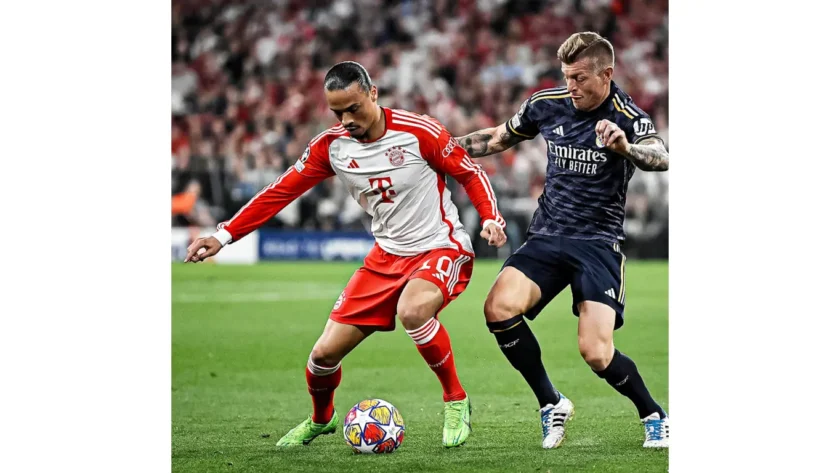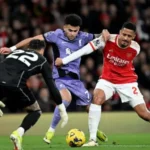Welcome to a detailed tactical analysis of the enthralling clash between Bayern Munich and Real Madrid. In this article, we dissect the strategic maneuvers, formations, and player roles that defined this thrilling encounter between the two European football giants. Both Bayern Munich and Real Madrid boast rich footballing histories and distinct tactical philosophies, making their matchups a spectacle for fans and a challenge for coaches. Join us as we unravel the tactical intricacies that unfolded on the pitch during this high-stakes showdown between two powerhouse clubs.
Bayern Munich
Build-up – First Half
In the first half, Bayern set up in a 1-4-4-2 formation that would turn into a 1-2-2-4-2 formation during the build-up. The fullbacks, Mazraoui and Kimmich, pushed up as wingers while the wingers, Sané and Musiala, came into the midfield.
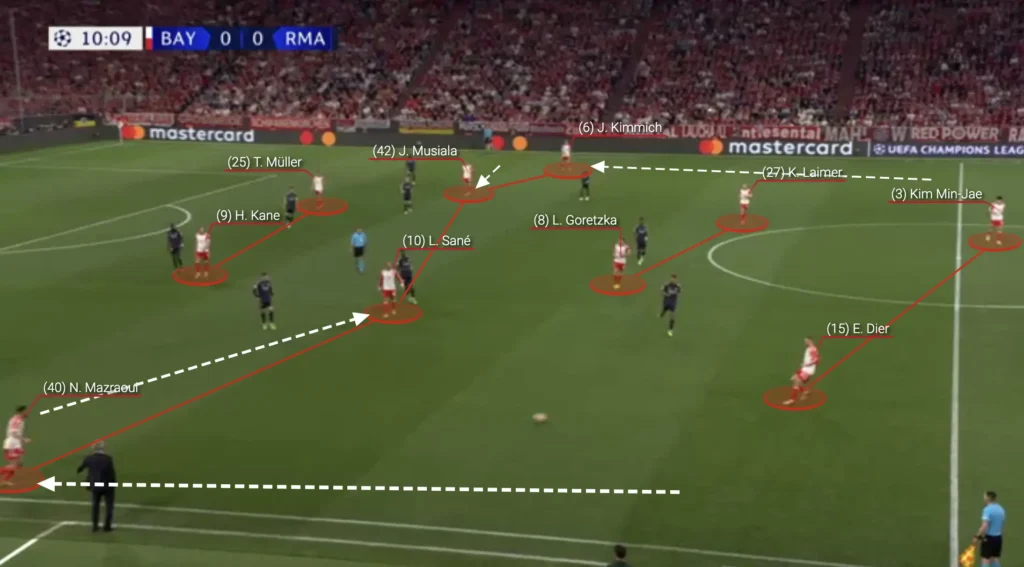
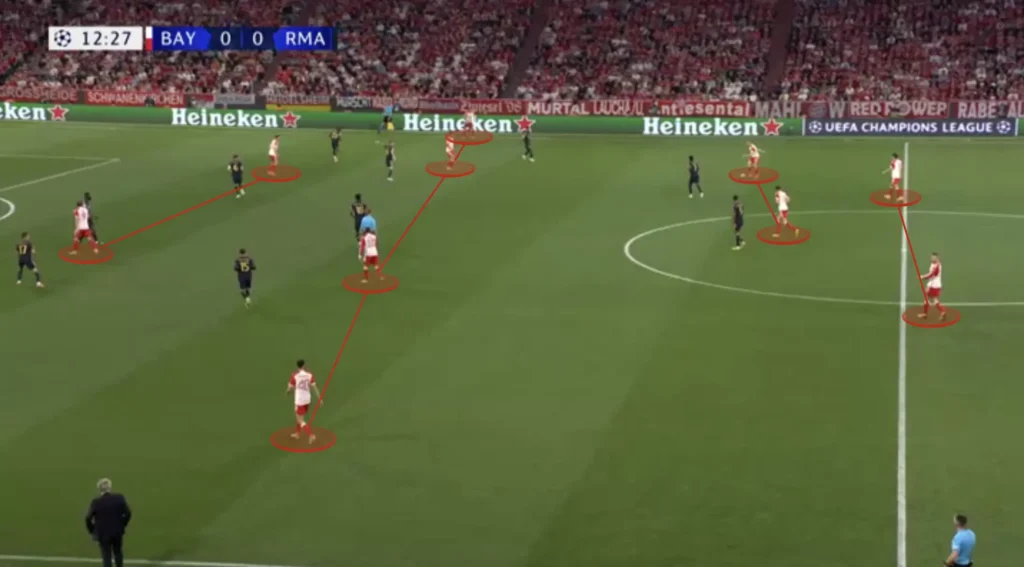
Müller and Kane, who played as strikers, were positioned between the center-backs and fullbacks in Bayern’s build-up.
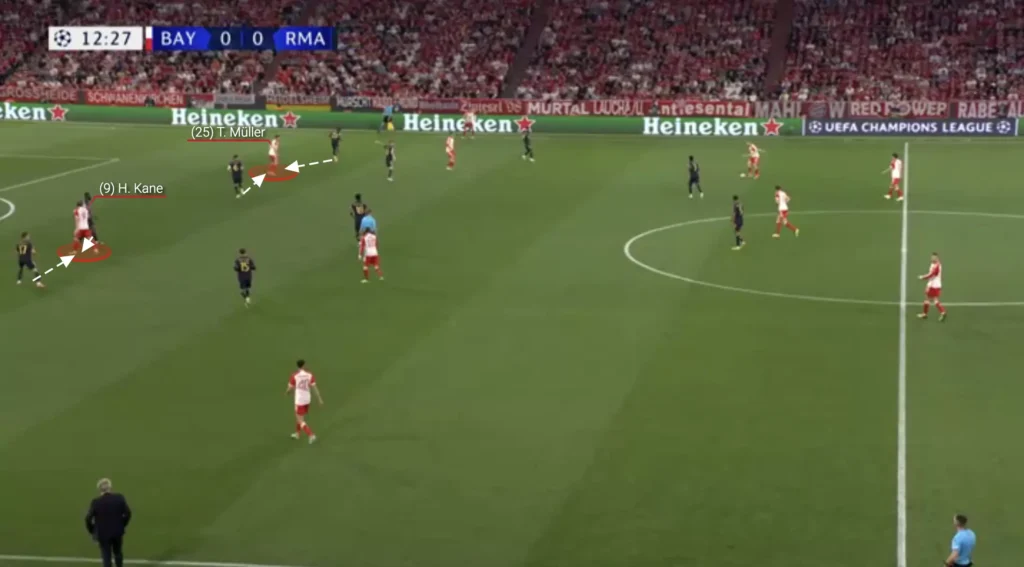
They did this to try to pin as many players as possible. This means restricting the movement of the defenders. This tactic involves positioning oneself in a way that the defender is forced to stay close to the attacker, effectively “pinned” to a certain area of the field. By doing so, the attacker creates space elsewhere for their teammates. Here, Müller’s and Kane’s positions made Real’s fullbacks and center-backs unsure if they should mark them, and it usually resulted in both the fullback and center-back staying back. This gave Bayern numerical advantages in other areas and, for example, meant that the Bayern fullbacks often could receive the ball without getting pressed.
With the fullbacks pushing up and the wingers coming in, Bayern could often create 3v2 situations against Real’s fullbacks and center-backs. The fullbacks could, as established, usually receive the ball and take it forward without getting pressed. From there, they found different combinations to get past the Real backline and create goalscoring opportunities. Here, Mazraoui played the ball to Kane, who used a one-touch pass to find a run from Sané in behind.
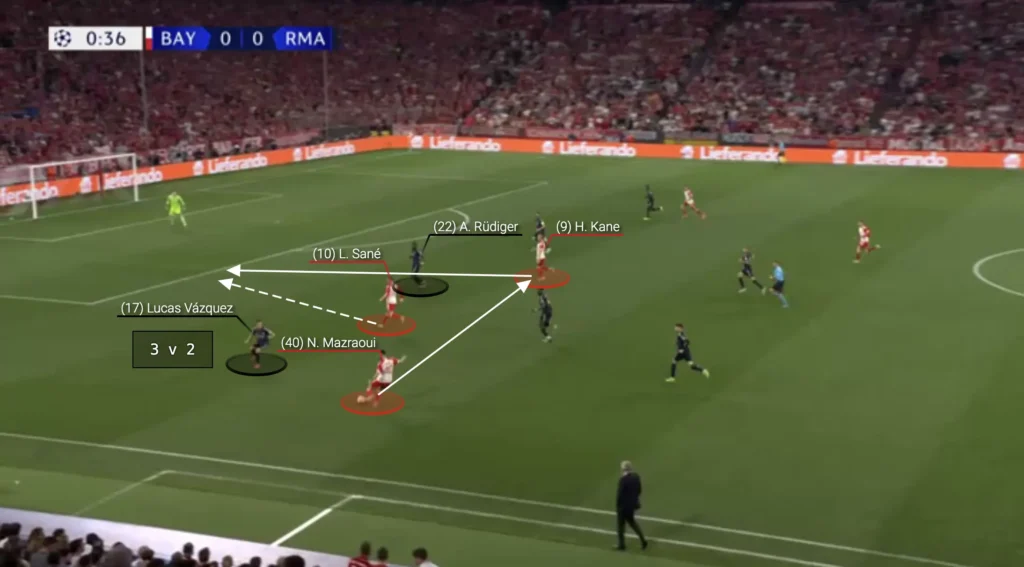
Build-up – Second Half
In the second half, Tuchel changed the formation into 1-4-3-3, with Raphaël Guerreiro coming on for Goretzka and playing as the left-sided number-eight.
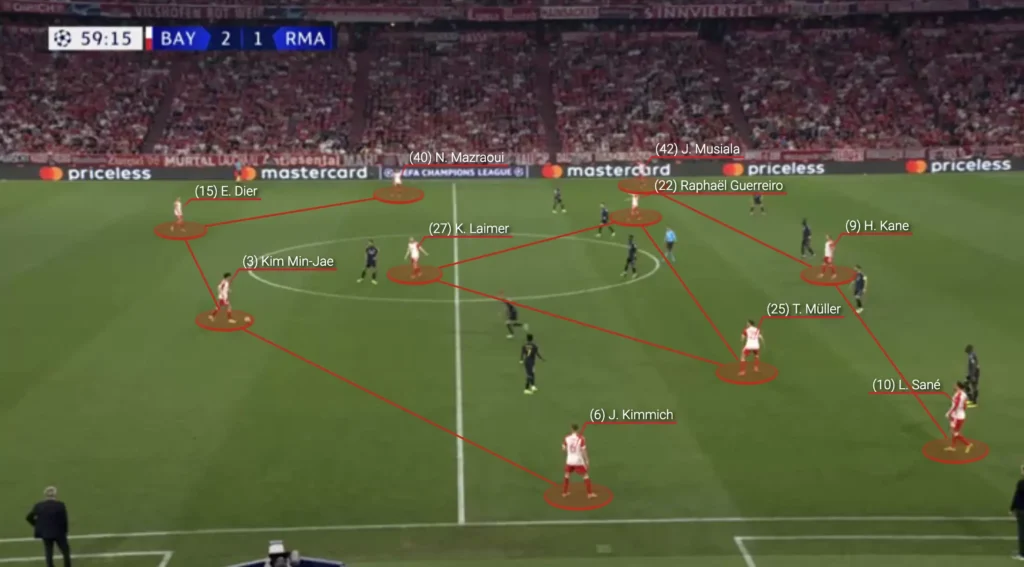
In this formation, they focused on finding the number-eights, mainly Müller, in the pockets. Müller’s position was always between the Real players, which made it difficult for them to know who should mark him. Laimer would find passes to Müller, breaking the Madrid lines and allowing Müller to turn and attack the defense.
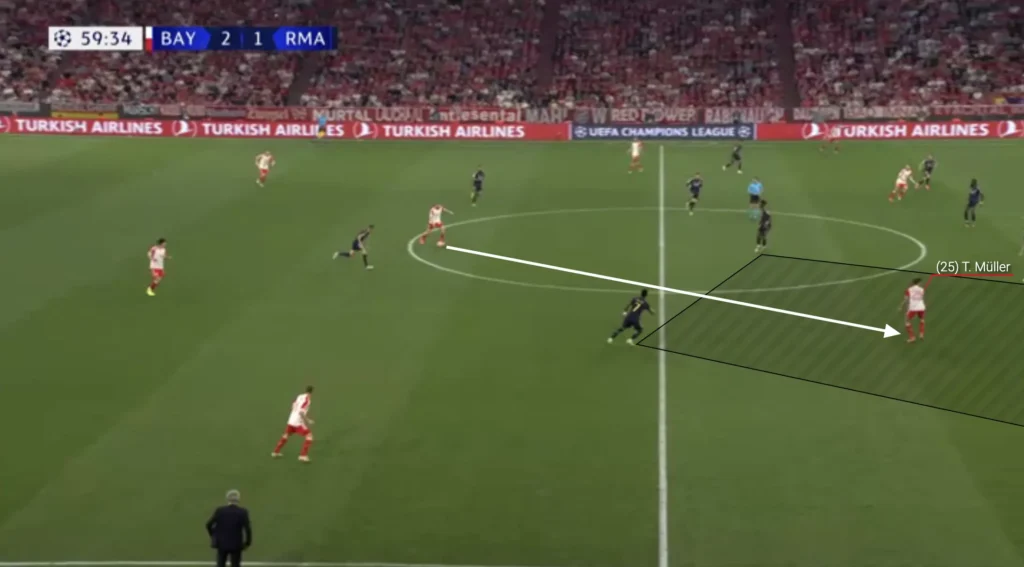
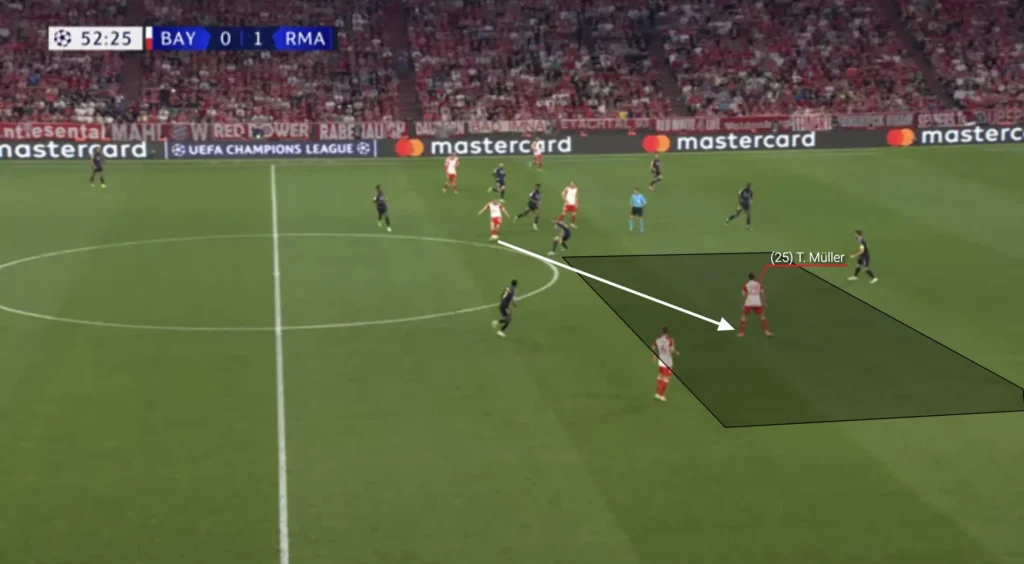
Goals
For Bayern’s first goal, Sané got the ball on the wing and started to attack Mendy. Kimmich made an overlapping run, creating a 2v1 with Sané against Mendy. Mendy dropped to cover the pass to Kimmich, which opened the space inside. Sané took the ball inside and scored with a low shot at the front post.
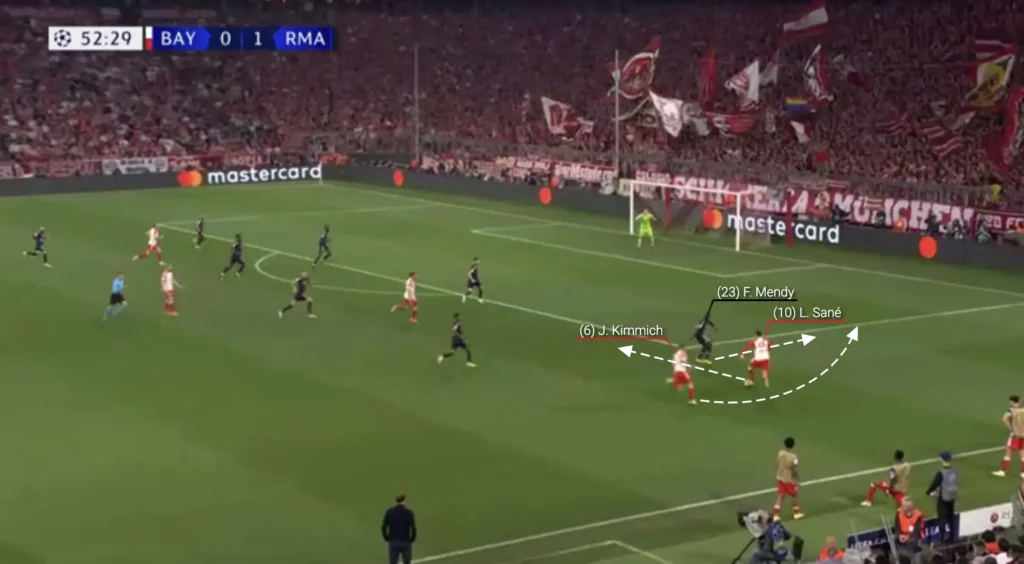
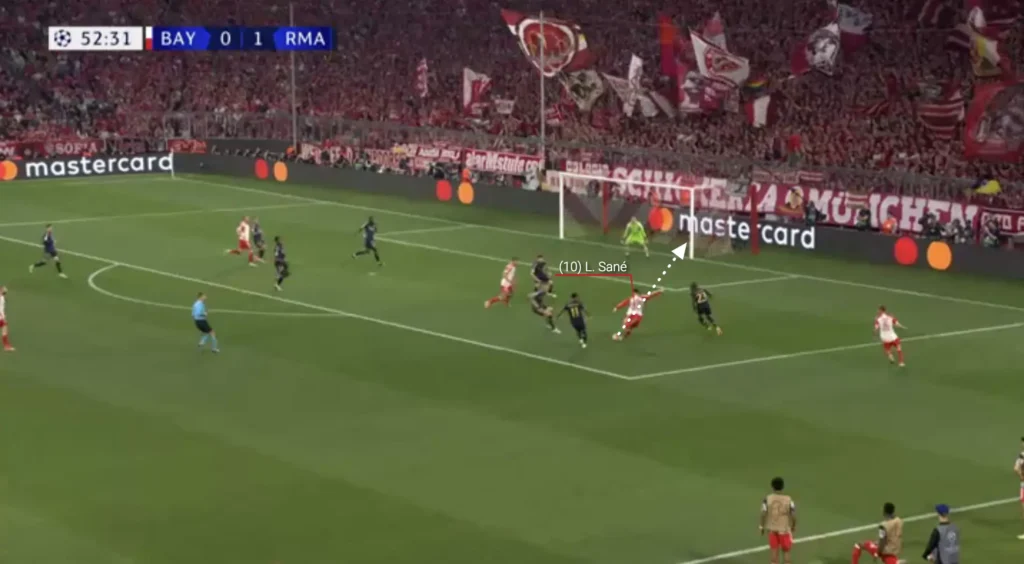
The second goal came from a penalty. Firstly, Müller received the ball in the pocket and turned with an incredible backfoot first touch.
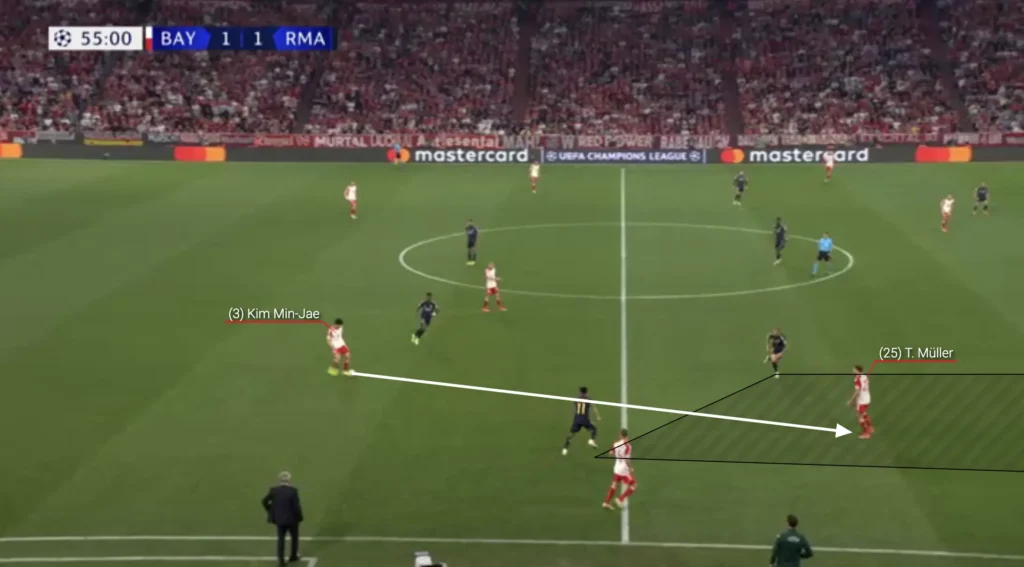
Müller took the ball inside and played the ball out to Musiala. A run in behind from Guerreiro forced the Real right-back, Lucas Vásquez, to come inside and cover the run, which opened the space for Musiala outside. When Musiala received the ball, he could take the ball into the penalty area and attack Vásquez in a 1v1 situation. Musiala managed to get past Vásquez through his technical brilliance, leading to Vásquez taking him down and giving Bayern the penalty.
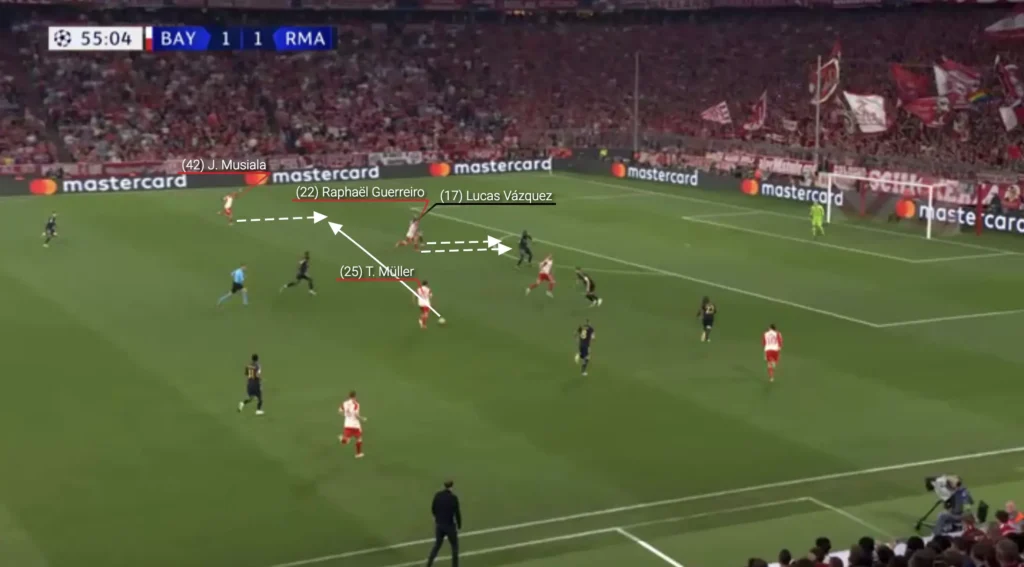
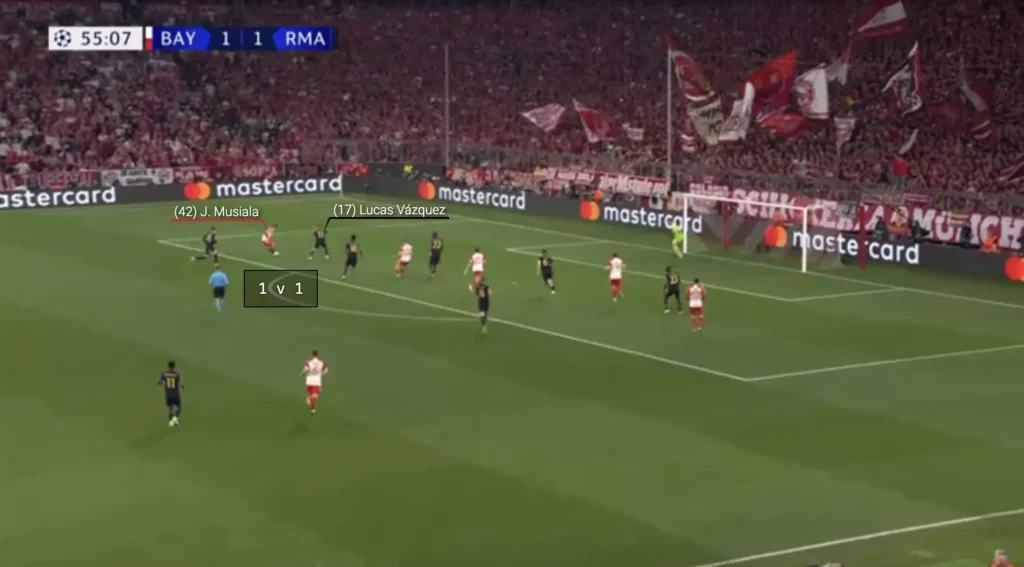
Defending
Bayern used a 1-4-4-2 formation when defending. They looked to set up in a mid-block, always trying to stay compact while closing the center, forcing Real Madrid out wide.
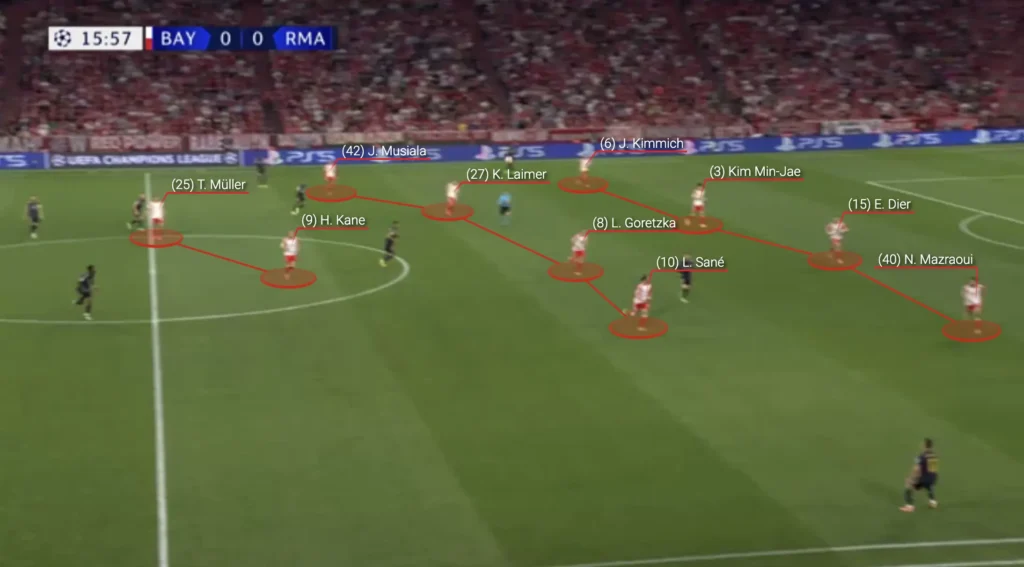

Defensive Transitions
Because Real often became very low when defending, Bayern could successfully defend Real’s counterattacking attempts. They got many players back and purposefully protected the center, not allowing the fast Real attackers to attack the Bayern goal. The counterattacks are usually Real greatest attacking threat, however, in this game, they were completely neutralized.
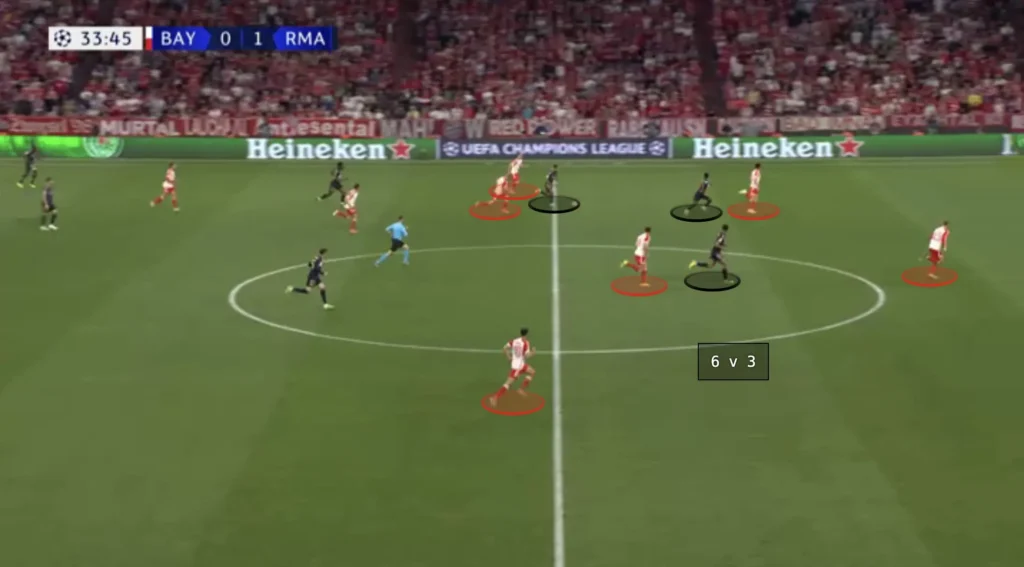

Real Madrid
Low Build-up
Real Madrid used a 1-4-2-3-1 formation in the low build-up, with Vinicius Jr playing as the striker and Valverde, Bellingham, and Rodrygo playing just behind.
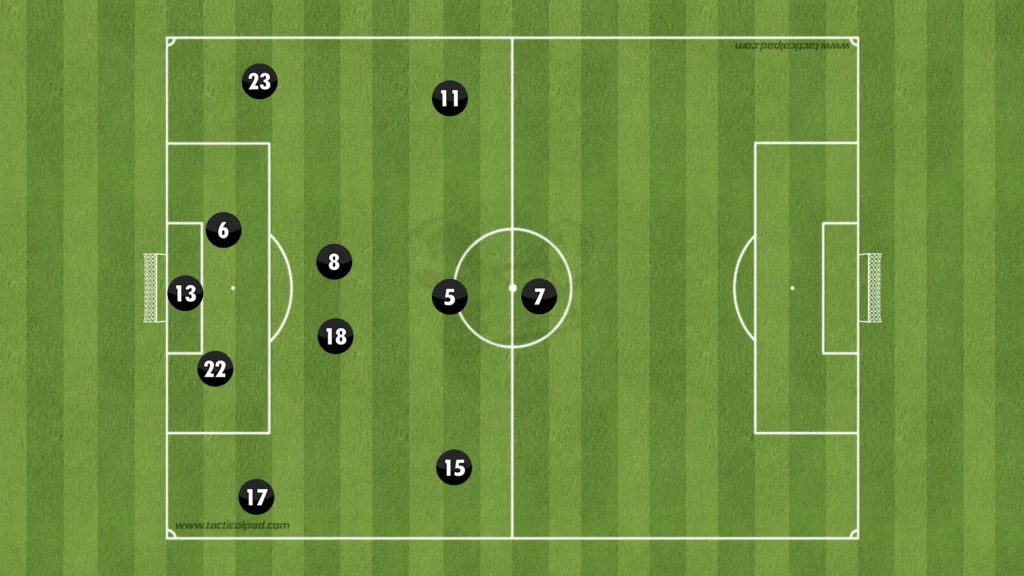
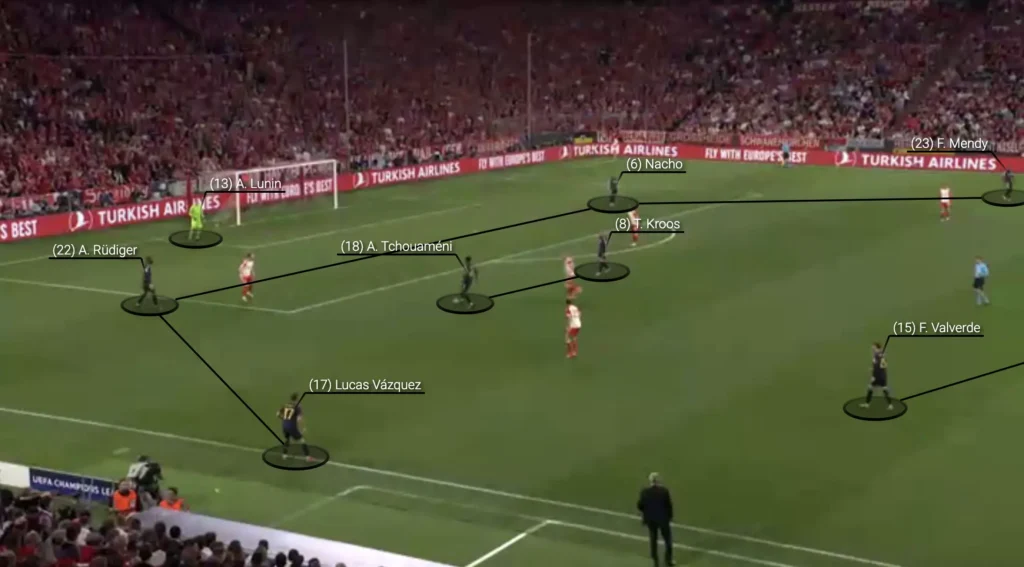
Real often dropped with many players and created numerical superiorities, which allowed them to beat the Bayern press and progress to the high build-up.
High Build-up
In the high build-up, Real Madrid would rotate into a 1-2-3-5 formation. They would primarily do this by pushing Lucas Vásquez up on the wing and bringing Ferland Mendy into the midfield. They were, however, very fluid, and the players often switched positions, creating questions and confusion for the Bayern players.
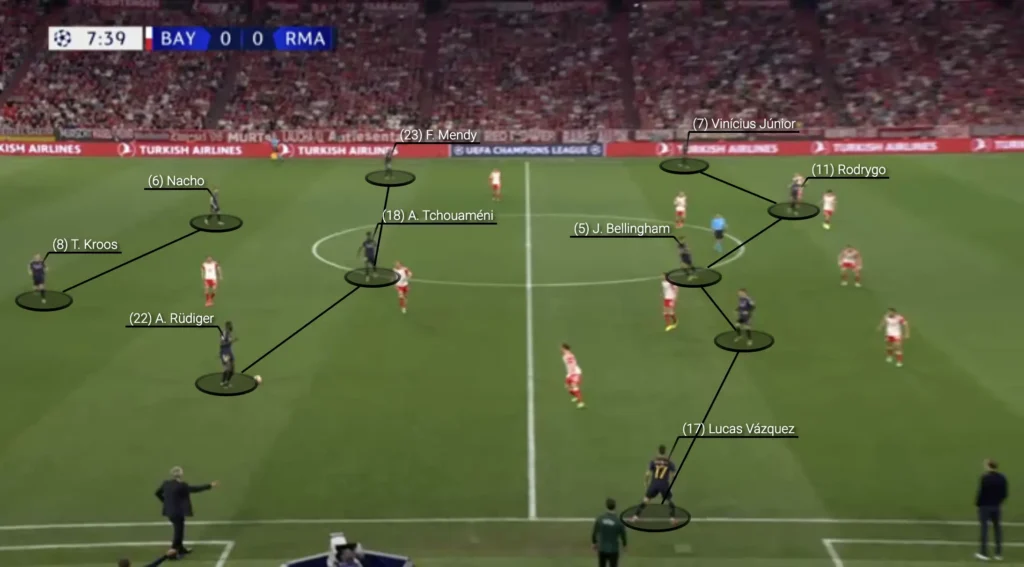
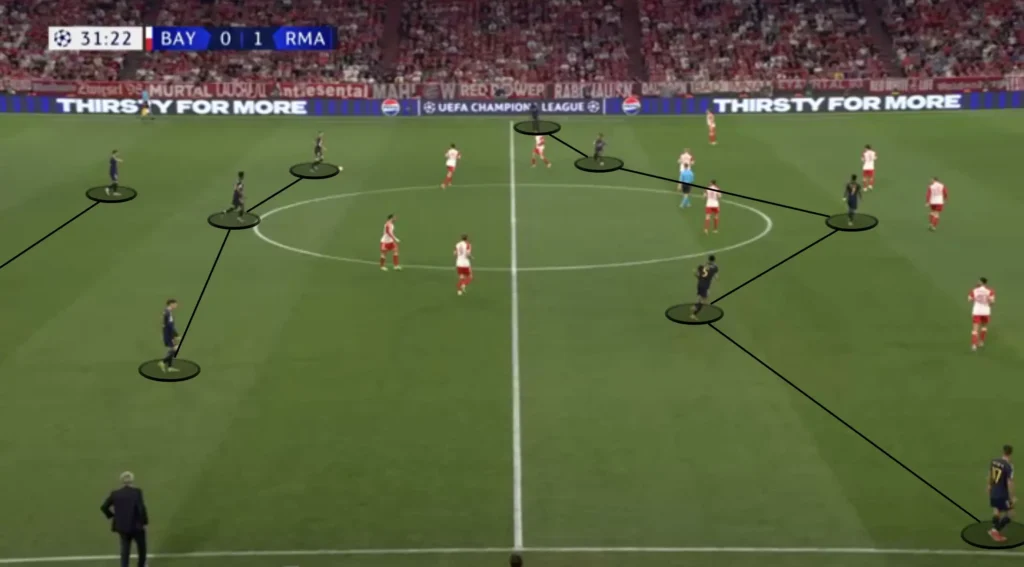
Even the center-backs switched positions, often coming into the midfield to create more questions and confusion for Bayern. When they did this, Kroos usually dropped down as a center-back to keep the 1-2-3-5 formation.
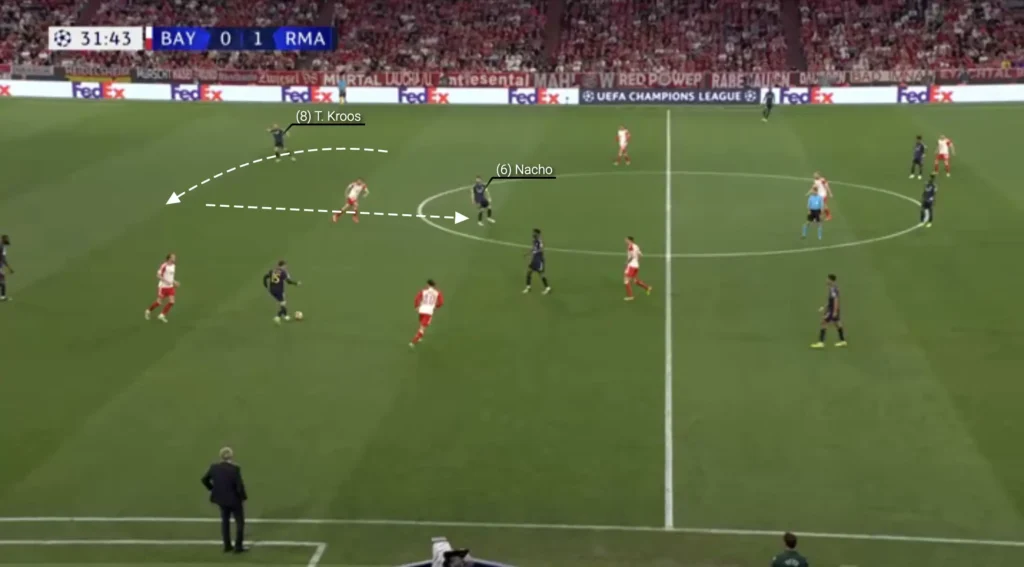
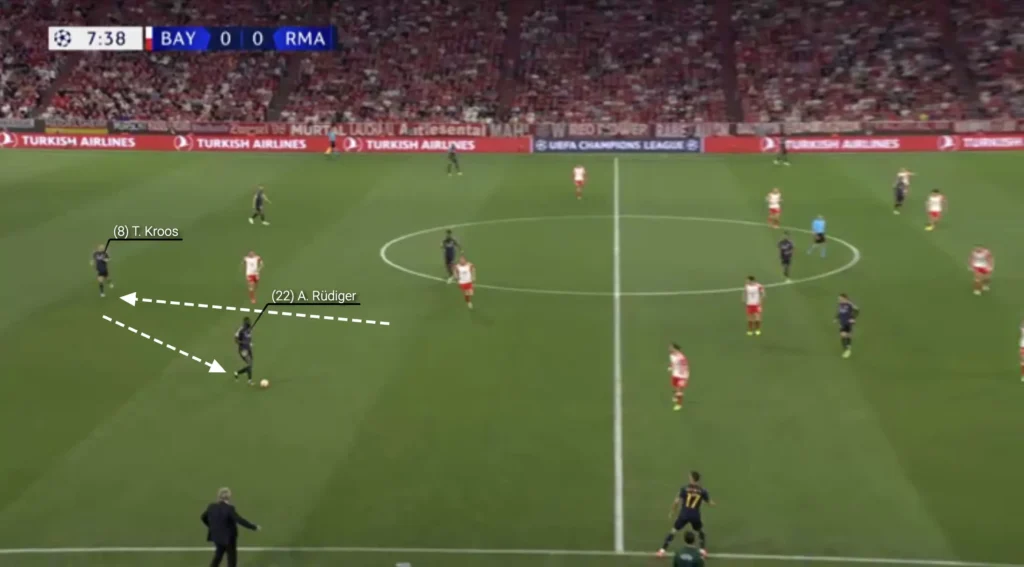
Throughout the game, Vinicius Junior had a physical and psychological advantage against Kim Min-Jae on the balls in behind. He was faster and would almost win every race they had for the ball. Real tried to exploit this many times during the game. Vinicius would make a run in behind the Bayern backline, a Real midfielder played a through-ball, and Vinicius won the race to the ball and got a 1v1 against Neuer.
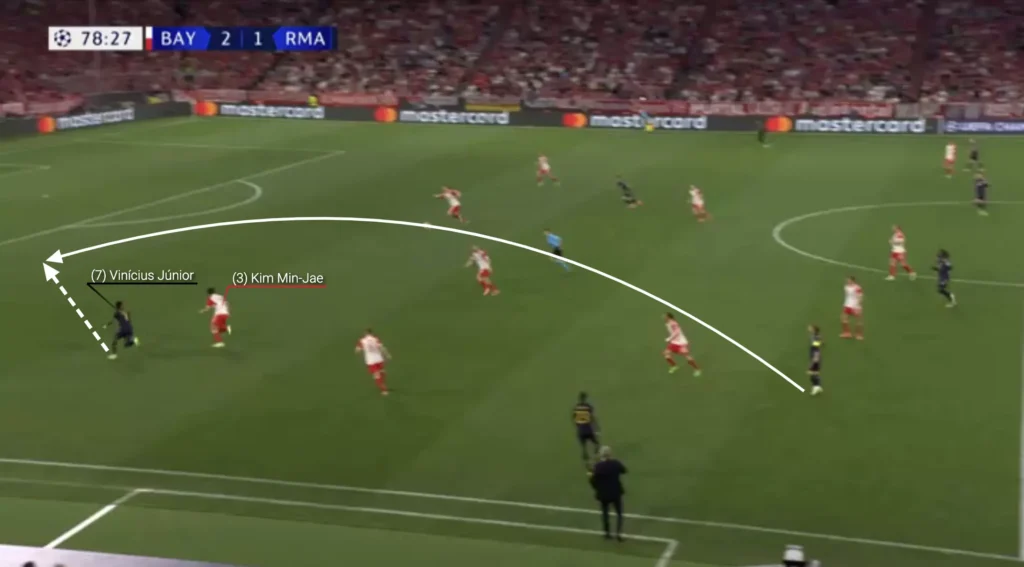
Goals
Real’s first goal came from a Vinicius Junior run in behind and an incredible assist from Toni Kroos. At first, Vinicius dropped to receive a pass from Kroos with his back to goal. Kim Min-Jae was very aggressive and pushed up on Vinicius, which opened the space in behind. Vinicius made a run into the open space, allowing Kroos to play a through-ball to him. Vinicius won the race against Kim to the ball and got a 1v1 against Neuer, which he scored. Kim’s aggressiveness was good in some parts of the game. Here, however, it opened a massive space for Real to exploit.
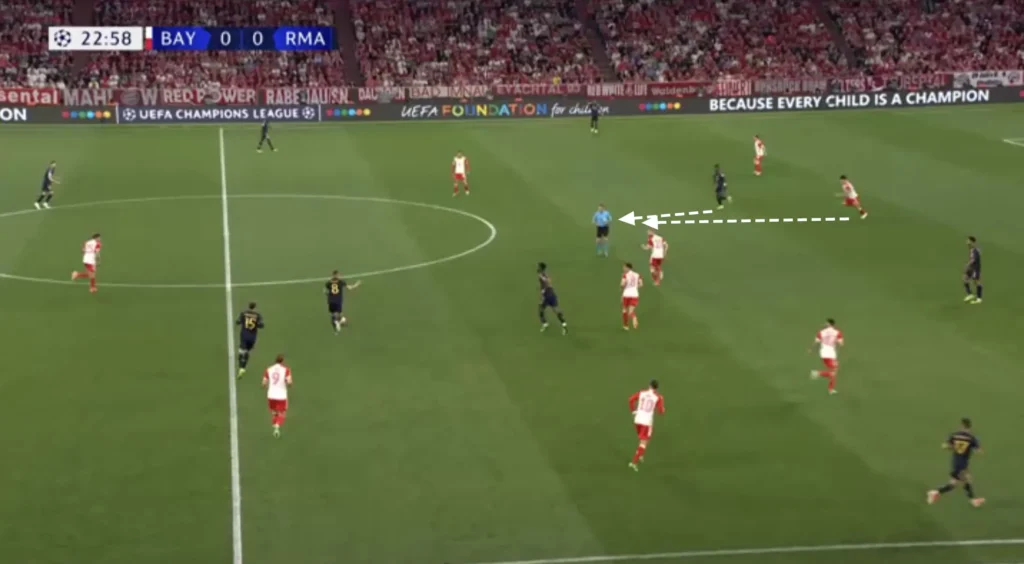
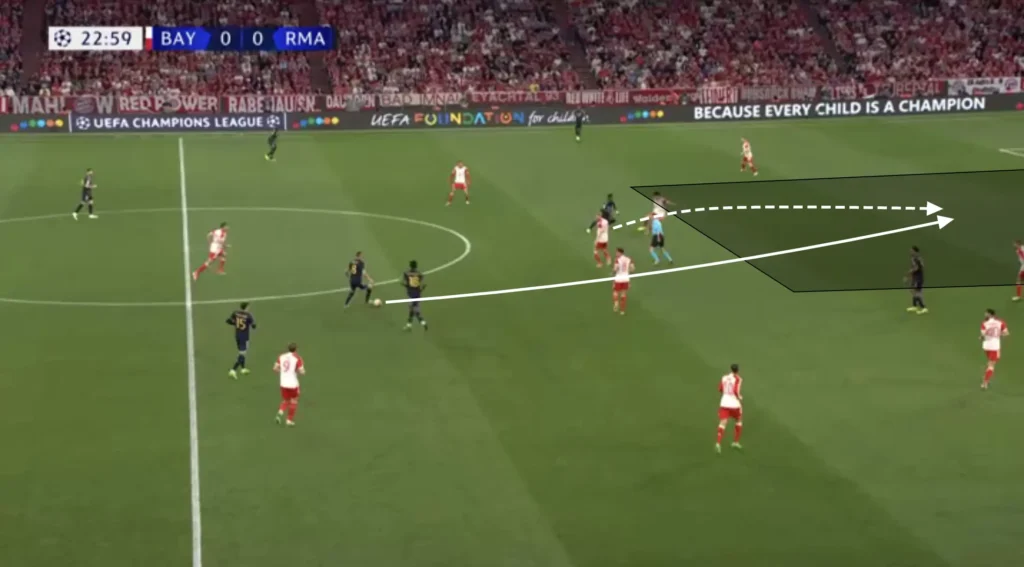
The second goal came from a penalty where Kim Min-Jae, once again, made a mistake. He opened the space inside too much, which allowed Vinicius Junior to play the ball into that space for Rodrygo. Rodrygo managed to get around Kim, which forced Kim to take him down, giving Real the penalty.
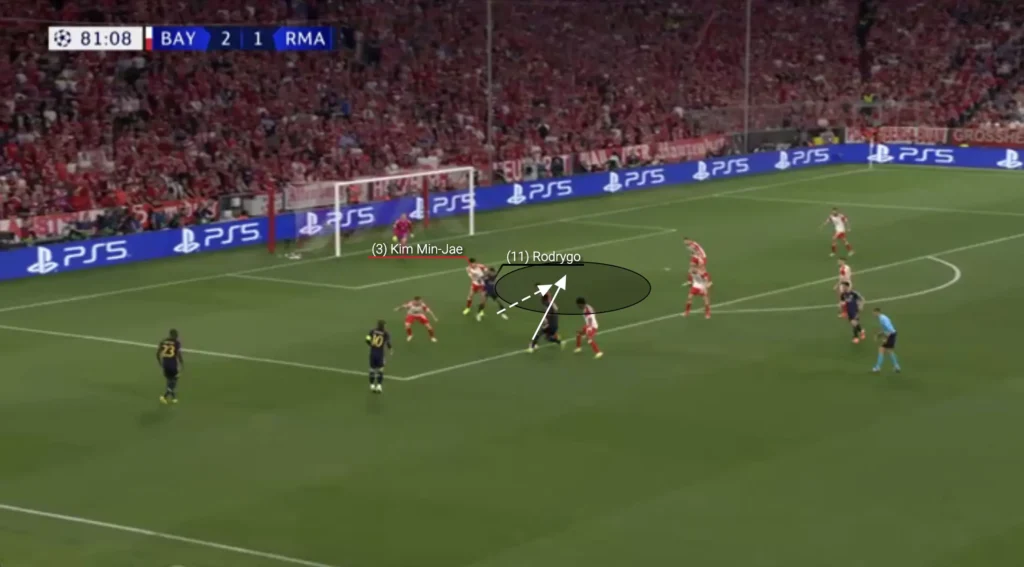
Defending
Real Madrid used a 1-4-4-2 formation when defending. They looked to set up in a mid to low-block, always trying to stay compact while closing the center, pushing Bayern out wide. Bellingham and Vinicius Jr played as strikers with little defensive responsibility, which forced the wide midfielders, Rodrygo and Valverde, to work extra hard to cover the central spaces.
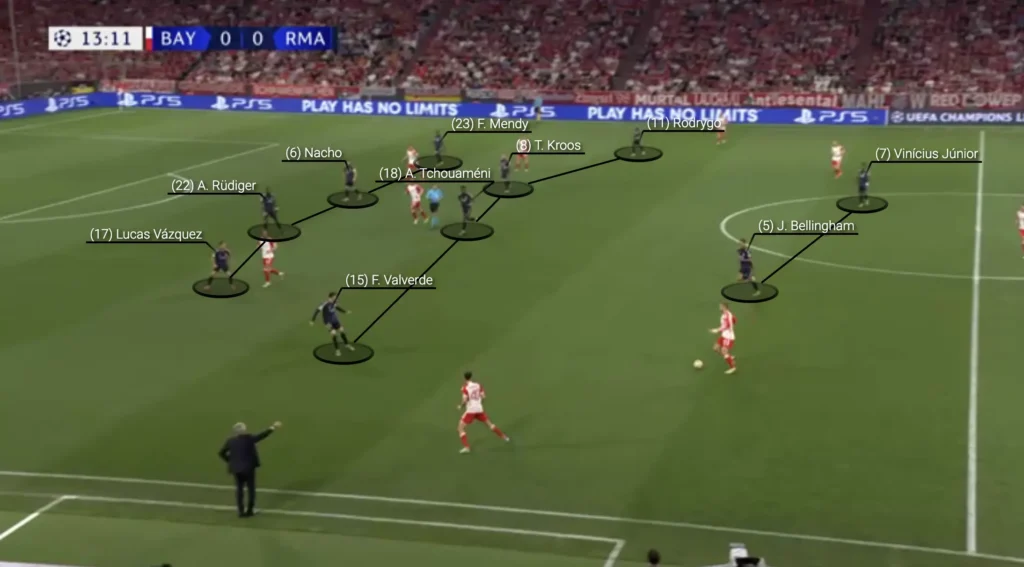
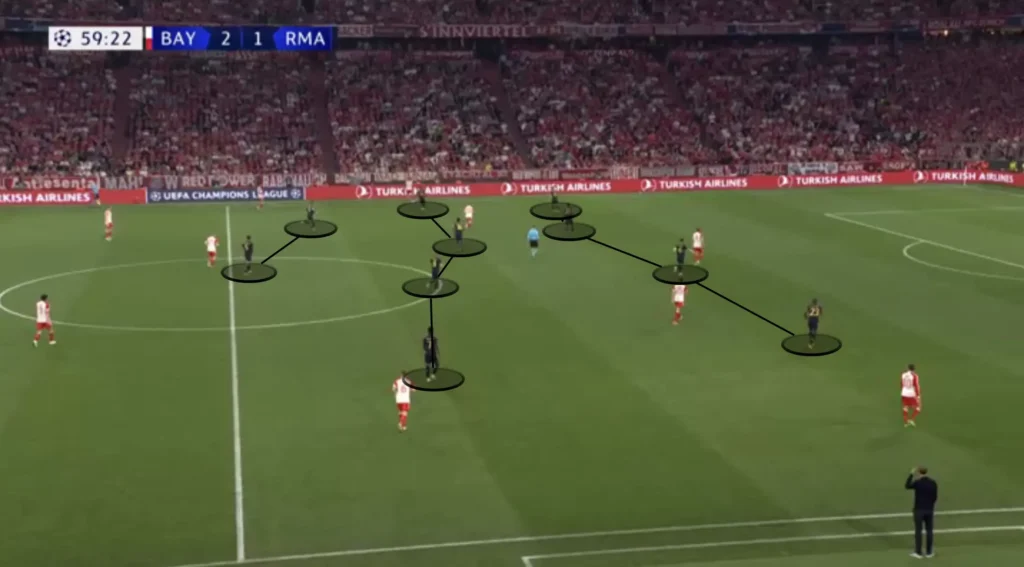
Bayern Munich struggled to break Real down. This was mainly due to Real’s compactness. They made the space in between the lines extremely small, never allowing Bayern’s dangerous midfielders to receive the ball there.
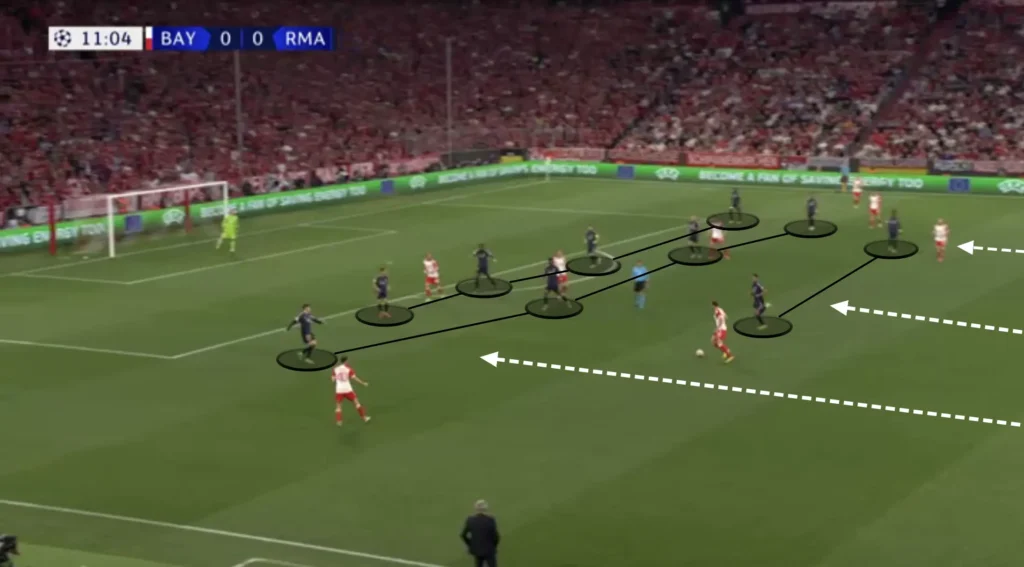
While this made Real difficult to break down, they had a very long way to Bayern’s goal. This often made their counterattacking attempts unsuccessful.
Final Thoughts
In conclusion, the tactical analysis of the captivating encounter between Bayern Munich and Real Madrid unveils a dynamic chess match on the football pitch. Both teams exhibited tactical prowess, adapting their strategies to gain control and exploit vulnerabilities. Bayern Munich showcased their attacking prowess, while Real Madrid demonstrated resilience and effective defensive organization. The intricate tactical maneuvers, coupled with the individual brilliance of players, contributed to a thrilling spectacle for football enthusiasts worldwide. As the analysis comes to a close, it’s evident that matches of this caliber highlight the beauty and complexity of football tactics, leaving fans eagerly anticipating the next chapter in this enduring rivalry.

